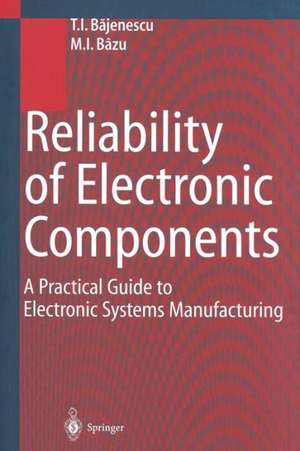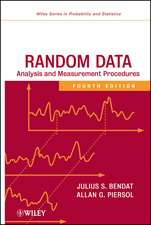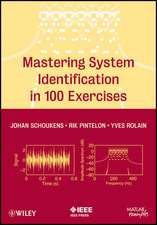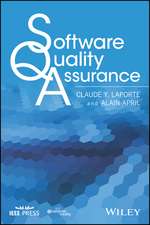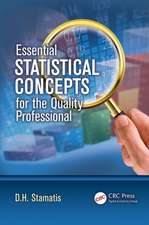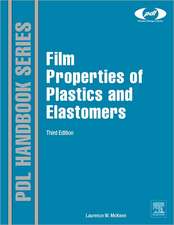Reliability of Electronic Components: A Practical Guide to Electronic Systems Manufacturing
Autor Titu I. Bajenescu, Marius I. Bazuen Limba Engleză Paperback – 16 oct 2012
Preț: 709.58 lei
Preț vechi: 834.80 lei
-15% Nou
Puncte Express: 1064
Preț estimativ în valută:
135.78€ • 142.12$ • 113.01£
135.78€ • 142.12$ • 113.01£
Carte tipărită la comandă
Livrare economică 31 martie-14 aprilie
Preluare comenzi: 021 569.72.76
Specificații
ISBN-13: 9783642636257
ISBN-10: 364263625X
Pagini: 556
Ilustrații: XLI, 509 p.
Dimensiuni: 155 x 235 x 29 mm
Greutate: 0.77 kg
Ediția:Softcover reprint of the original 1st ed. 1999
Editura: Springer Berlin, Heidelberg
Colecția Springer
Locul publicării:Berlin, Heidelberg, Germany
ISBN-10: 364263625X
Pagini: 556
Ilustrații: XLI, 509 p.
Dimensiuni: 155 x 235 x 29 mm
Greutate: 0.77 kg
Ediția:Softcover reprint of the original 1st ed. 1999
Editura: Springer Berlin, Heidelberg
Colecția Springer
Locul publicării:Berlin, Heidelberg, Germany
Public țintă
Professional/practitionerCuprins
1 Introduction.- 1.1 Definition of reliability.- 1.2 Historical development perspective.- 1.3 Quality and reliability.- 1.4 Economics and optimisation.- 1.5 Probability; basic laws.- 1.6 Specific terms.- 1.7 Failures types.- 1.8 Reliability estimates.- 1.9 “Bath—tub” failure curve.- 1.10 Reliability of electronic systems.- 1.11 Some examples.- References.- 2 State of the Art in Reliability.- 2.1 Cultural features.- 2.2 Reliability building.- 2.3 Reliability evaluation.- 2.4 Standardisation.- References.- 3 Reliability of Passive Electronic Parts.- 3.1 How parts fail.- 3.2 Resistors.- 3.3 Reliability of capacitors.- 3.4 Zinc oxide (ZnO) varistors [3.39]...[3.45].- 3.5 Connectors.- References.- 4 Reliability of Diodes.- 4.1 Introduction.- 4.2 Semiconductor diodes.- 4.3 Z diodes.- 4.4 Trans-Zorb diodes.- 4.5 Impatt (IMPact Avalanche and Transit-Time) diodes.- References.- 5 Reliability of Silicon Transistors.- 5.1 Introduction.- 5.2 Technologies and power limitations.- 5.3 Electrical characteristics.- 5.4 Reliability characteristics.- 5.5 Thermal fatigue.- 5.6 Causes of failures.- 5.7 The package problem.- 5.8 Accelerated tests.- 5.9 How to improve the reliability.- 5.10 Some recommendations.- References.- 6 Reliability of Thyristors.- 6.1 Introduction.- 6.2 Design and reliability.- 6.3 Derating.- 6.4 Reliability screens by General Electric.- 6.5 New technology in preparation: SITH.- References.- 7 Reliability of Integrated Circuits.- 7.1 Introduction.- 7.2 Reliability evaluation.- 7.3 Failure analysis.- 7.4 Screening and burn-in.- 7.5 Comparison between the IC families TTL Standard and TTL-LS.- 7.6 Application Specific Integrated Circuits (ASIC).- References.- 8 Reliability of Hybrids.- 8.1 Introduction.- 8.2 Thin-film hybrid circuits.- 8.3 Thick-film hybrids.- 8.4Thick-film versus thin-film hybrids.- 8.5 Reliability of hybrid ICs.- 8.6 Causes of failures.- 8.7 Influence of radiation.- 8.8 Prospect outlook of the hybrid technology.- 8.9 Die attach and bonding techniques.- 8.10 Failure mechanisms.- References.- 9 Reliability of Memories.- 9.1 Introduction.- 9.2 Process-related reliability aspects.- 9.3 Possible memories classifications.- 9.4 Silicon On Insulator (SOI) technologies.- 9.5 Failure frequency of small geometry memories.- 9.6 Causes of hardware failures.- 9.7 Characterisation testing.- 9.8 Design trends in microprocessor domain.- 9.9 Failure mechanisms of microprocessors.- References.- 10 Reliability of Optoelectronics.- 10.1 Introduction.- 10.2 LED reliability.- 10.3 Optocouplers.- 10.4 Liquid crystal displays.- References.- 11 Noise and Reliability.- 11.2 Excess noise and reliability.- 11.3 Popcorn noise.- 11.4 Flicker noise.- 11.5 Noise figure.- 11.6 Improvements in signal quality of digital networks.- References.- 12 Plastic Package and Reliability.- 12.1 Historical development.- 12.2 Package problems.- 12.3 Some reliabilistic aspects of the plastic encapsulation.- 12.4 Reliability tests.- 12.5 Reliability predictions.- 12.6 Failure analysis.- 12.7 Technological improvements.- 12.8 Can we use plastic encapsulated microcircuits (PEM) in high reliability applications?.- References.- 13 Test and Testability of Logic Ics.- 13.1 Introduction.- 13.2 Test and test systems.- 13.3 Input control tests of electronic components.- 13.4 LIC selection and connected problems.- 13.5 Testability of LICs.- 13.6 On the testability of electronic and telecommunications systems.- References.- 14 Failure Analysis.- 14.1 Introduction [14.1]...[14.25].- 14.2 The purpose of failure analysis.- 14.3 Methods of analysis.- 14.4 Failure causes.-14.5 Some examples.- References.- 15 Appendix.- 15.1 Software-package RAMTOOL++ [15.1].- 15.2 Failure rates for components used in telecommunications.- 15.3 Failure types for electronic components [15.2].- 15.4 Detailed failure modes for some components.- 15.5 Storage reliability data [15.3].- 15.6 Failure criteria. Some examples.- 15.7 Typical costs for the screening of plastic encapsulated ICs.- 15.8 Results of 1000 h HTB life tests for CMOS microprocessors.- 15.9 Results of 1000 h HTB life tests for linear circuits.- 15.10 Average values of the failure rates for some IC families.- 15.11 Activation energy values for various technologies.- 15.12 Failures at burn-in.- References.- General Bibliography.- Reliability Glossary.- List of Abbreviations.- Polyglot Dictionary of Reliability Terms.
Textul de pe ultima copertă
The objective of this book is to better understand why components fail, addressing the needs of engineers who will apply reliability principles in design, manufacture, testing, and field service. It so contributes to new approaches and the development of electronic and telecommunications component reliability. As a reference source, it summarizes the knowledge on failure modes, degradation and mechanisms, including a survey of accelerated testing, achieving better reliability, total quality topics, screening tests and prediction methods. A detailed index, a glossary, acronym lists, reliability dictionaries and a rich specific bibliography round the benefit offered by the book. The technical level suites to senior and graduate students, as well as to experts and managers in industries.
Caracteristici
Application-oriented professional book It provides engineers and students with enough background to design and analyse reliaility procedures It also covers all the manufacturing aspects of electronic components and equipment The author has practical experience and scientific insight from his activities as engineer, consultant, and lecturer Includes supplementary material: sn.pub/extras
